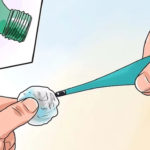Is the mercury in the thermometer toxic? Is it dangerous?
Mercury is a silver-white, odorless, liquid metal that evaporates slowly at room temperature (25 degrees Celsius). A mercury thermometer contains about 0.61 grams of mercury (according to the EPA). Mercury in the form of a volatile gas is very toxic to the human body.
Generally, the mercury used in thermometers is highly toxic. However, if mercury is accidentally swallowed, there is usually no cause for significant concern because pure mercury is poorly absorbed through the skin and digestive tract and can be excreted from the body.

The toxic threshold for mercury in the body is > 4-5 micromol/liter or > 1.6 microgram/kg/day (according to FAO/WHO Joint Expert Committee on Food Additives). Mercury poisoning is only dangerous when it is absorbed in large amounts into the bloodstream, which typically occurs in cases of gastrointestinal diseases such as intestinal perforation.
Although accidental swallowing of mercury is not dangerous, inhalation of mercury vapor can be extremely toxic, especially for children. When a mercury thermometer breaks, the mercury is released into the air and can lead to severe health issues if inhaled.

2 How to handle a broken mercury thermometer
If a mercury thermometer breaks, it is important to take the following steps to handle the situation:
- Step 1: Quickly move children and relatives to a safe area.
- Step 2: Put on protective gear such as rubber gloves and medical masks, and proceed to clean up the spilled mercury.
- Step 3: Use a cotton swab or thin paper to collect the mercury and place it in a sealed glass jar.
- Step 4: Seal the glass jar, place it in a bag, and dispose of it properly in the trash.

When handling mercury, it is important to take necessary precautions:
- Use wet cotton sticks or thin paper to collect the mercury gently to avoid breaking it further.
- If possible, sprinkle sulfur powder on the spilled mercury to make it less volatile. Alternatively, egg yolks can be used as a substitute.
- After cleaning, ventilate the area for a few hours before resuming normal activities.
- Seal the glass jar containing the collected mercury and properly dispose of it. Do not pour it down the drain to avoid water contamination.
- Dispose of contaminated clothing or wash them thoroughly before reuse.
- Seek medical attention if there are signs of mercury poisoning or if someone has swallowed mercury.

3 Things to avoid when mercury is spilled
When mercury spills occur, it is crucial to avoid the following actions:
- Do not use mechanical equipment or brushes to clean up the spilled mercury as it may spread further.
- Avoid pouring mercury down the drain as it can clog pipes and complicate repairs.
- If clothing or shoes are contaminated with mercury, do not move around in the house and change them immediately to prevent spreading the mercury.

4 Signs of mercury poisoning
Signs of mercury poisoning include metallic taste in the mouth, nausea, headache, facial weakness, voice loss, body aches, and cold stomach. Inhaling mercury vapor can also cause respiratory impairments, coughing, shortness of breath, pale skin, swelling, rupture, and bleeding in the oral cavity, teeth, and gums. Skin contact with mercury can lead to allergic dermatitis, rashes, insomnia, mental panic, and mood swings. Seek medical attention promptly if signs of mercury poisoning are observed.

5 Notes to avoid breakage when using mercury thermometers
To prevent the breakage of a mercury thermometer, it is advisable to store it in a safe place out of reach of children. Using an electronic thermometer as an alternative is recommended to avoid the danger of mercury poisoning. There are many electronic thermometers available on the market that cater to various needs.

Reference source: hellobacsi.com
Above is important information for handling broken mercury thermometers. If you have any questions, please leave a comment below!






































